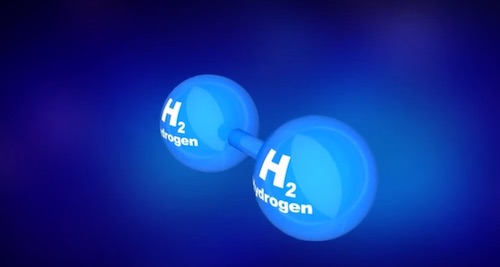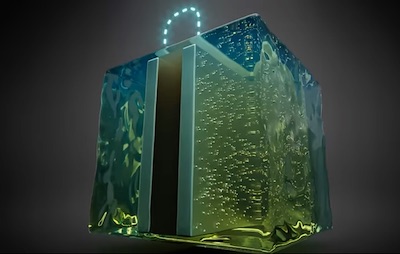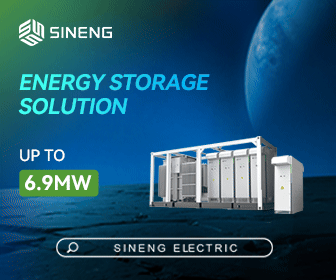The Path to Easy and Affordable Green Hydrogen
In the world of zero greenhouse gas (GHG) fuels, hydrogen is tough to beat. Kermit the Frog once lamented, “It’s not easy being green”. If hydrogen could sing, that would be its refrain. When hydrogen burns, the only byproduct is water vapor. It sounds green, right? Unfortunately, we haven’t yet figured out an easy way to extract hydrogen from the natural environment. The primary means of making hydrogen affordably today involves fossil fuels, which cancels out the zero GHG benefit.

Affordability is key, because while we do have the technology to create hydrogen without using fossil fuels, it’s very expensive to do so. Both green and pink hydrogen are the end products of creating hydrogen using an electrolyzer. For pink, the electrolyzer is powered by nuclear energy. For green, it’s powered by a renewable source like wind or solar. These methods can typically produce hydrogen priced at $3-6 per kilogram (kg), compared to hydrogen made using natural gas, which is in the $1-3 range. The U.S. Department of Energy’s Hydrogen Shot aims to get the cost of green hydrogen production down to $1 per kg by 2031; the Inflation and Reduction Act of 2022 (IRA) reflects this goal by offering incentives and tax credits.
Given the large demand for hydrogen, the learning curve cost reductions on electrolyzers, and current financial incentives, the race is on to create hydrogen efficiently and sustainably. The inputs for making green hydrogen are water and electricity; the outputs are hydrogen and oxygen. In theory, you just need to pop an electrolyzer powered by a solar farm near a water source (you could do it on the moon!) and boom, you’re in business. But just like our friend Kermit said, it’s not that easy. Why? Let’s take a closer look.
 The process of splitting molecules to create hydrogen is both complex and energy intensive. Electrolyzers use electricity to split water molecules into hydrogen and oxygen. There are currently two main electrolyzer technologies commercially available: proton exchange membrane (PEM) and alkaline. PEM technology tends to be more expensive due to relying on higher-cost components, but alkaline electrolyzers can be more sensitive to power fluctuations, which are inevitable with renewable energy. When electrolyzers detect instability in their power stream, they tend to shut down for safety, interrupting production (and therefore reducing the plant’s efficiency). By these metrics alone, it would appear PEM electrolyzers are the more solid bet in our race to make $1/kg hydrogen. Unless, that is, there is a way to reliably stabilize the power input of renewable resources.
The process of splitting molecules to create hydrogen is both complex and energy intensive. Electrolyzers use electricity to split water molecules into hydrogen and oxygen. There are currently two main electrolyzer technologies commercially available: proton exchange membrane (PEM) and alkaline. PEM technology tends to be more expensive due to relying on higher-cost components, but alkaline electrolyzers can be more sensitive to power fluctuations, which are inevitable with renewable energy. When electrolyzers detect instability in their power stream, they tend to shut down for safety, interrupting production (and therefore reducing the plant’s efficiency). By these metrics alone, it would appear PEM electrolyzers are the more solid bet in our race to make $1/kg hydrogen. Unless, that is, there is a way to reliably stabilize the power input of renewable resources.
In the past, the task of hydrogen production has been taken on primarily by oil and gas companies using conventional energy production methodologies. Getting to truly green and economical hydrogen production, however, is going to take more than simply replacing fossil-fuel generators with solar panels; it’s going to require a shift in how energy is produced, stored, and managed, which is much better approached from the cleantech angle (especially if the renewable power source is solar PV or wind). The reason for this goes back to the issue with renewable power sources and their intermittency. Developing a system that can guarantee firm power delivery from variable wind and solar resources necessitates a different approach.
At a high level, the system will require ample solar PV and/or wind production to satisfy the energy needs of the electrolyzer. Critical to the stability of renewable power production is the inclusion of a battery energy storage system (BESS), which behaves like a power system shock absorber by absorbing excess power spikes and injecting power during dips. Organizing all these elements on a microgrid provides management and control of all the energy assets as a cohesive and integrated system. A microgrid offers additional advantages in terms of islanding capabilities, enabling the plant to operate independently of the larger outside power grid, as well as the opportunity to sell excess power production to the larger power grid, if connected. Lastly, this configuration requires a sophisticated control system capable of coordinating all the elements through a dispatch schedule for each of the resources that it determines and executes on its own.
Ideally, this control system would operate autonomously, ingesting and analyzing weather forecasts to determine a 24-hour schedule ahead of time for optimal battery charge and discharge. And because power forecasts are never 100 percent accurate, especially with variable renewables, the controller should have the capability to respond in real time to changes in both the power production and load requirements of the hydrogen plant. This means the controller needs real-time power production and load data from high-speed sensors on the microgrid network, and must be adept at processing and reacting to that data instantly. On the receiving end, the inverters connected to the BESS need to be capable of responding just as quickly to the dispatches sent by the controller. In green hydrogen production, precision control is key, since sensitive electrolyzers don’t cope well with power fluctuations.
Getting back to the PEM vs. alkaline electrolyzer question — if the primary drawback of alkaline electrolyzers is a lower tolerance for power variability, then solving that variability before it reaches the electrolyzer would seem to bump alkaline technology to the forefront for affordable hydrogen production capability.
The system and controller described already exist in the world of cleantech and microgrids, but aren’t commonly used within the oil and gas industry. Achieving $1/kg hydrogen will require pulling together pioneers from across energy sectors, both renewable and traditional, to reimagine effective, efficient, and affordable hydrogen production from the ground up.
Andy Miller is Head of Commercial Development overseeing business development and sales for PXiSE Energy Solutions. With the company since its inception in 2016, Andy has played an integral role in growing PXiSE by developing comprehensive business and go-to-market plans, establishing strategic partnerships, leading pricing strategy, and conducting techno-economic product analysis. PXiSE, a member of the Yokogawa Group, provides software that empowers utilities, developers, and asset owners to manage energy resources and delivery with renewable power plant controls, distributed energy resource management systems, and microgrid controllers.
PXiSE Energy Solutions | pxise.com
Author: Andy Miller
Volume: 2024 January/February









